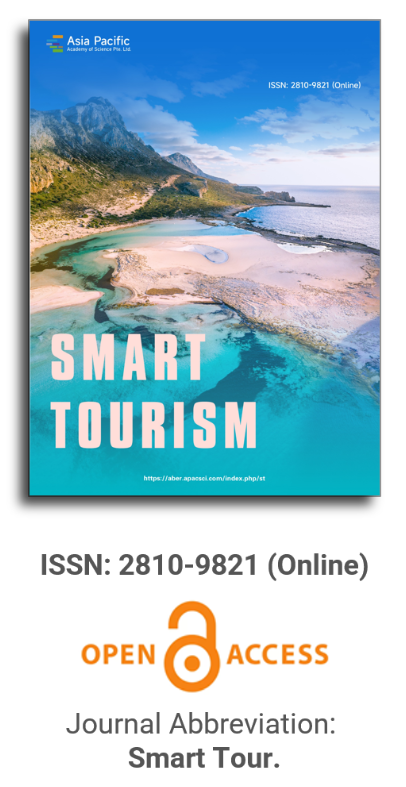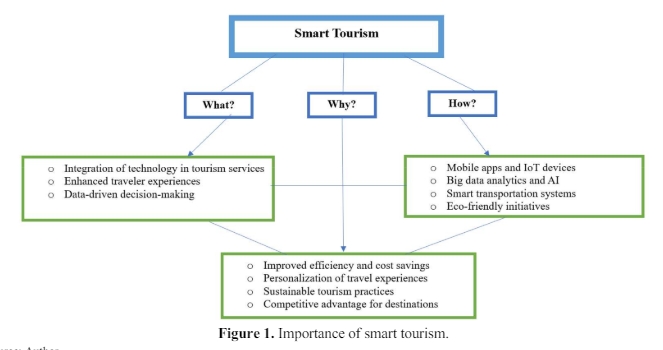


An exploratory analysis of the situation and future possibilities of Huatulco from the angle of smart destinations
Vol 2, Issue 1, 2021
Download PDF
Abstract
From the perspective of planning and managing smart destinations, this study presents an exploratory analysis of the present situation and possible future developments of the municipality of Santa Maria Huatulco (Oaxaca, Mexico). It starts with how smart tourism destinations are conceptualized and shows how this idea evolved from the idea of smart cities. Following an explanation of the technique, the four primary attributes of smart destinations—innovation, technology, sustainability, and accessibility—are next discussed. The presentation of two success stories—Dubai, United Arab Emirates, and Tequila, Mexico—follows, highlighting the measures taken by these travel hotspots to guarantee the contentment of both locals and tourists. Subsequently, the four aforementioned criteria are used to qualitatively examine the municipality of Santa María Huatulco and its current situation. The paper concludes with some observations that go over the primary areas this municipality should focus on improving in order to become a smart tourist destination, along with the advantages of doing so.
Keywords
References
- Del Chiappa G, Baggio R. Knowledge transfer in smart tourism destinations: Analyzing the effects of a network structure. Journal of Destination Marketing & Management 2015; 4(3): 145–150.
- Bakici T, Almirall E, Wareham J. A smart city initiative: The case of Barcelona. Springer Science & Business Media 2013; 4(2): 135–148.
- Batty M, Axhausen KW, Giannotti F, et al. Smart cities of the future. Europe Physical Journal 2012; 481–518.
- Naphade M, Banavar G, Harrison C, et al. Smarter cities and their innovation challenges. Computer 2011; 44(6): 32–39.
- Del Vecchio P, Mele G, Ndou V, et al. Creating value from social big data: Implications for smart tourism destinations. Information Processing & Management 2018; 54(5): 847–860.
- Buhalis D, Amaranggana A. Smart tourism destinations. Information and communication technologies in tourism. Suiza: Springer International Publishing; 2014. p. 553–564.
- Schmidt-Cornejo NEC, Santillan-Núñez MA, Velarde-Valdez M. Fundamentos teórico-tecnológicos de un destino inteligente: Diagnóstico del destino turístico Mazatlán (Spanish) [Theoretical-technological foundations of an intelligent destination: Diagnosis of the tourist destination Mazatlan]. Cultur 2016; 10(3): 51–64.
- Miah SJ, Vu HQ, Gammack J, et al. A Big Data analytics method for tourist behaviour analysis. Information & Management 2016; 54(6): 771–785.
- López de Ávila, A. Gestionar el modelo turístico del siglo Xxi (Spanish) [Managing the tourism model of the 20th century]. Revista de aenor 2016; 314: 10–15.
- Asociación Española de Normalización y Certificación (aenor). La Norma une178501:2018. Sistema de gestión de destinos turísticos inteligentes. Requisitos (Spanish) [Intelligent tourism destination management system]. Madrid: aenor; 2018.
- Aguiar Díaz MA. Tequila, es el primer destino geoturístico de México en un cobranding con National Geographic. (Spanish) [Tequila is Mexico’s first geotourism destination in a cobranding with National Geographic]. Fundación José Cuervo 2017; 7.
- KPMG. Dubai—A new paradigm for smart cities. Amstelveen: Holanda; 2015
- Khan MS, Woo M, Nam K, et al. Smart city and smart tourism: A case of Dubai. Sustainability 2017; 9.
- De Arteaga F. Modelo Tequila pueblo mágico, inteligente sostenible (Spanish) [Model Tequila magical town, intelligent and sustainable. Monthly Newsletter, José Cuervo Foundation]. Boletín Mensual, Fundación José Cuervo 2017.
- López Guevara VM. La reorientación en los destinos litorales planificados. Caso de estudio: Bahías de Huatulco, Oaxaca (México) (Spanish) [Reorientation in planned coastal destinations. Case study: Huatulco Bays, Oaxaca (Mexico)] [Master’s thesis]. Alicante (España): Universidad de Alicante; 2010.
- Talledos Sánchez E. La imposición de un espacio: de La Crucecita a Bahías de Huatulco (Spanish) [The imposition of a space: From La Crucecita to Bahías de Huatulco]. Revista Mexicana de Ciencias Políticas y Sociales 2012; 57(216): 119–142.
- Rocha Rodríguez J. Agua y vulnerabilidad: Experiencias comunitarias en la costa de Oaxaca (Spanish) [Water and vulnerability: Community experiences on the coast of Oaxaca]. In: Filgueiras-Nodar JM, García-Flores JG (editors). Oaxaca verde: ética Ambiental para nuestro estado (Spanish) [Green Oaxaca: Environmental ethics for our state]. Cuernavaca: Letras del Lobo; 2016. p. 187–202.
- Gómez A, Server M, Jara A, et al. Municipal Government of Santa María Huatulco (gMH). Plan Municipal de Desarrollo de Santa María Huatulco 2017–2018 (Spanish) [Municipal Development Plan of Santa María Huatulco 2017–2018]. City Hall of Santa Maria Huatulco, Oaxaca: GMH; 2017.
- Ministerio de Industria, Turismo y Comercio (MitC). Plan del turismo español horizonte 2020 (Spanish) [Spanish tourism plan horizon 2020]. Madrid: Secretary of State for Tourism; 2008.
- UNWTO. Tourism in the green economy. Madrid: UNWTO; 2012.
- Domínguez-Licona JM, Gómez-Rojo VR, Hernández-Santiago C, et al. El caso de la problemática de la bahía y micro-cuenca delrío Cacaluta, Santa María Huatulco, Oaxaca (Spanish) [The case of the problem of the bay and micro-basin of the Cacaluta River, Santa María Huatulco, Oaxaca]. Diagnosis of the natural resources of the Bay and Micro-basin of the Cacaluta River, Municipality of Santa María Huatulco, Oaxaca. Puerto Angel, Pochutla, Oaxaca: University of the Sea, CONACyT-SEMARNAT; 2008. p. 470–510.
- Hollnagel J. From “magic town” to smart city: The case of Tequila, Mexico. Inter-American Development Bank Blogs; 2015. Available from: https://blogs.iadb.org/ciudadessostenibles/2015/01/20/tequila/
- Boes K, Buhalis D, Inversini A. Smart tourism destinations: Ecosystems for tourism destination competitiveness. International Journal of Tourism Cities 2016; 2(2): 108–124.
Supporting Agencies
Copyright (c) 2021 María Angélica Piñón González, Berenice Castillejos López
License URL: https://creativecommons.org/licenses/by/4.0/

This site is licensed under a Creative Commons Attribution 4.0 International License (CC BY 4.0).

Prof. Hung-Che Wu
Nanfang College, Guangzhou
China
Indexing & Archiving
Asia Pacific Academy of Science Pte. Ltd. (APACSCI) specializes in international journal publishing. APACSCI adopts the open access publishing model and provides an important communication bridge for academic groups whose interest fields include engineering, technology, medicine, computer, mathematics, agriculture and forestry, and environment.



.jpg)
.jpg)

.jpg)

